Segovia: Ancient Roman aqueduct and castle that inspired Disney inspires day trip into hills outside Madrid
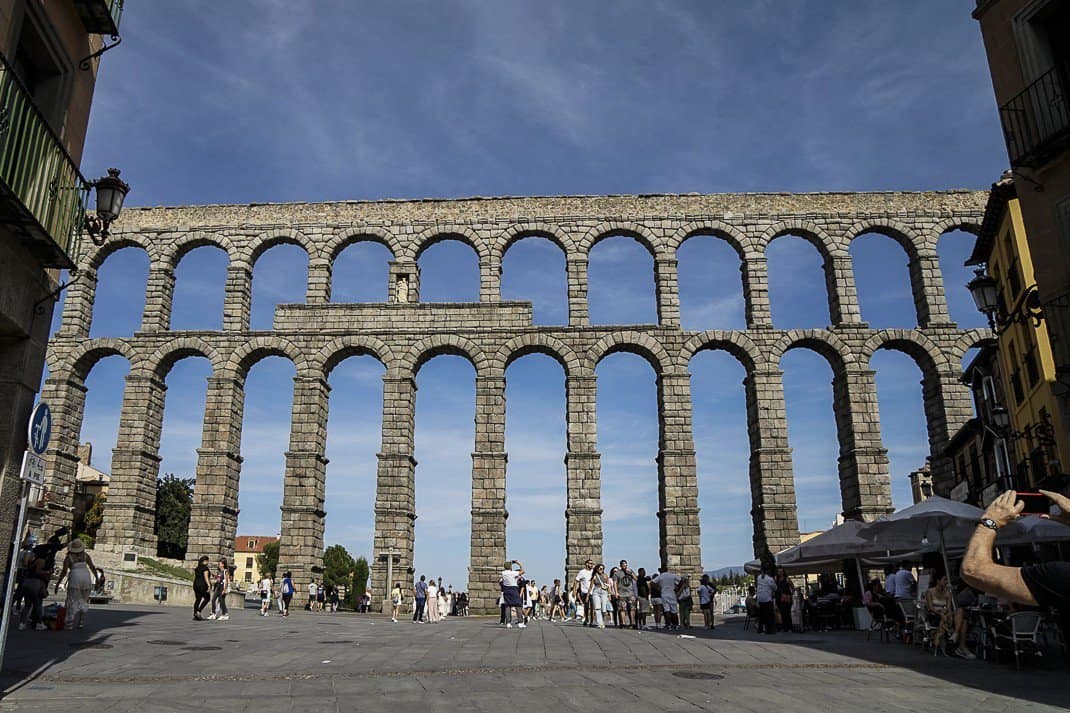
SEGOVIA, Spain – Living in Rome for nearly 10 years and traveling a lot, I’m often reminded of how far Ancient Rome’s vicious tentacles reached around the world. I touched a Roman wall in England. I toured a Roman city in Turkey. I dined in a Roman colosseum in France. The Roman Empire stretched from England to what is now Iraq and evidence is littered everywhere in between 2,000 years later.
But nowhere I’ve been outside Italy have I seen a better-preserved Roman antiquity as in a town tucked into the hills north of Madrid. An ancient aqueduct hovers over Segovia, Spain, like a high suspension bridge. The towering granite structure stands more than 90 feet (28 meters) above Plaza del Azoguejo and looks as if it could supply water to the people just as it did when it was built in the 1st century A.D.
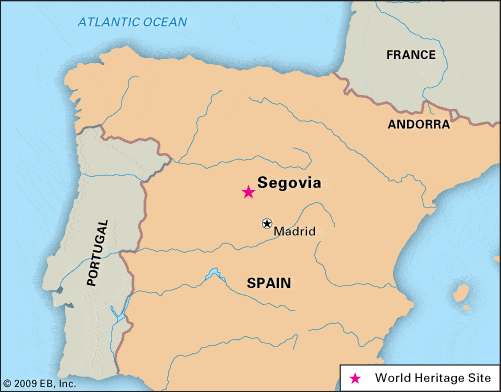
My adopted city of Rome had 11 aqueducts and many still stand around town. One still carries water down from the Apennine Mountains to Trevi Fountain. But none has the majestic presence of Segovia’s. It has the awe factor. It took my breath away. I felt like a child looking at a skyscraper for the first time.
I immediately thought, Where the hell am I?
Why Segovia?
In the spirit of our year-old biweekly website, TraveLazio, dedicated to day trips from Rome, Marina and I took a day trip from Madrid during our long weekend earlier this month. Segovia, a UNESCO World Heritage Site since 1985, won in a close call over Toledo, the famous melting pot of the Middle Ages but one we feared would be too touristy. Even in October, Spain is crawling with savvy travelers avoiding the country’s searing summer heat.
Besides, the trip to Segovia alone was worth the effort.
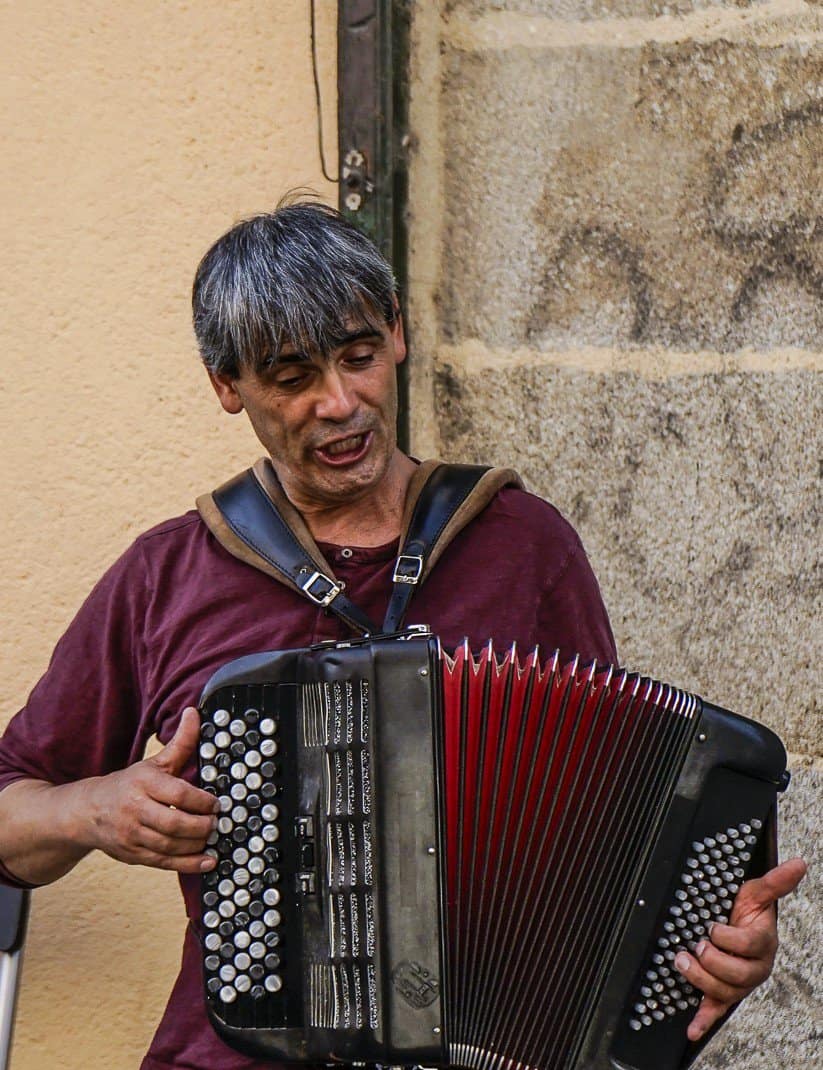
Then again, nothing great in travel is ever easy and just getting on the train north was the most stressful part of our day. In the morning we took a Metro subway from our hotel in the museum zone in southeast Madrid to Chamartin station in the north end of the city. When we arrived we learned we weren’t savvy travelers beating the tourists.
All the trains were full. The only train returning didn’t leave until 9:30 p.m.
However, there are two train options to Segovia. The fast train whisks you to town in 28 minutes. The slow train takes about two hours, but it’s the scenic route. The kind train clerk, who spoke impeccable English, found a slow train leaving in 30 minutes.
I asked what track? He said look at the big departures board. The problem was Chamartin station is huge. We saw directions to platforms spread out all over the massive main lobby. Our departure was counting down and our track still hadn’t appeared. Fifteen minutes, nothing. Ten minutes, nothing. At five minutes, we still didn’t know where we had to sprint.
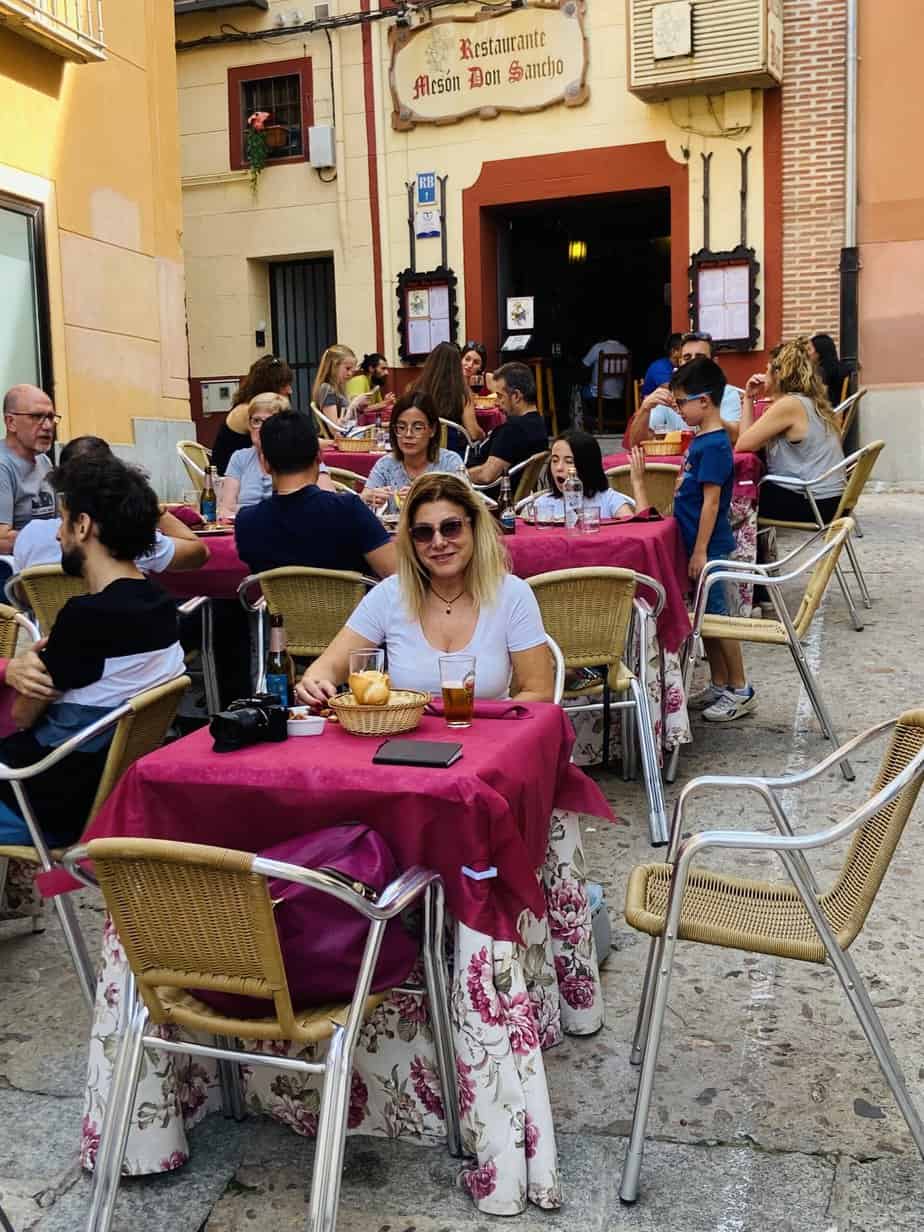
Adding to the equation, Galapagos tortoises walk faster than Marina. I considered fitting her into my backpack.
At three minutes before departure, our track number appeared. We joined about 100 other over-anxious travelers racing forward like Real Madrid on a breakaway. We took our seats about 60 seconds before the doors closed.
The journey
Once we cleared the scruffy outskirts of Madrid, we entered rural Castile, Spain’s north-central region known for its raw beauty and history. We passed vast green fields dotted with red-roofed houses. We climbed into the Sierra de Guadarrama mountains. Horses grazed on old farms. Cattle and horses roamed in open fields with mountains as a backdrop.
A low, dry plain below stretched to the horizon. Around the town of Ortigosa del Monte looked like the perfect scene for an old Western.
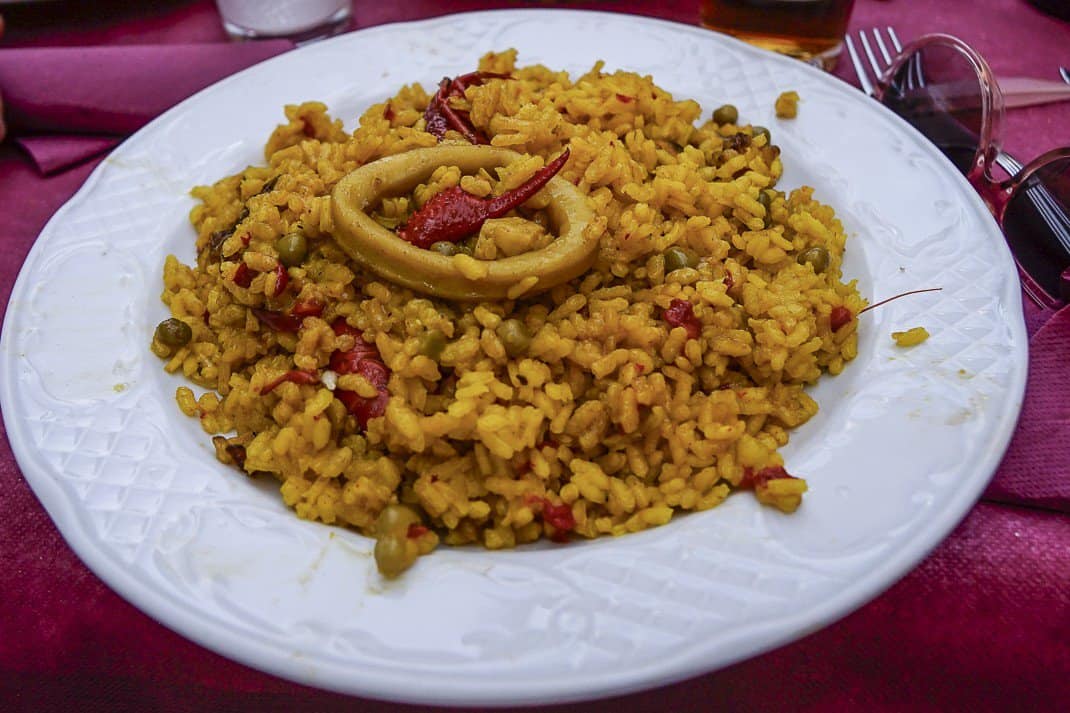
Segovia’s station is a flat five-kilometer (three-mile) walk to the town center. By the time we arrived, we were starving. And Segovia was packed. Tourists were everywhere. Two restaurants were booked for lunch and dinner. But we went up a dead end alley and found Meson Don Sancho.
The 25-year-old restaurant had pretty white and red floral tablecloths and what we’d been dying for since we arrived in Spain 48 hours earlier: paella. The Spanish diet staple of rice and everything from shellfish to roast duck has been a regular in Spanish dining rooms since the Arabs introduced rice 1,200 years ago. It was originally the fuel for farmers and laborers who cooked it over a wood fire and threw in whatever they had laying around the kitchen.
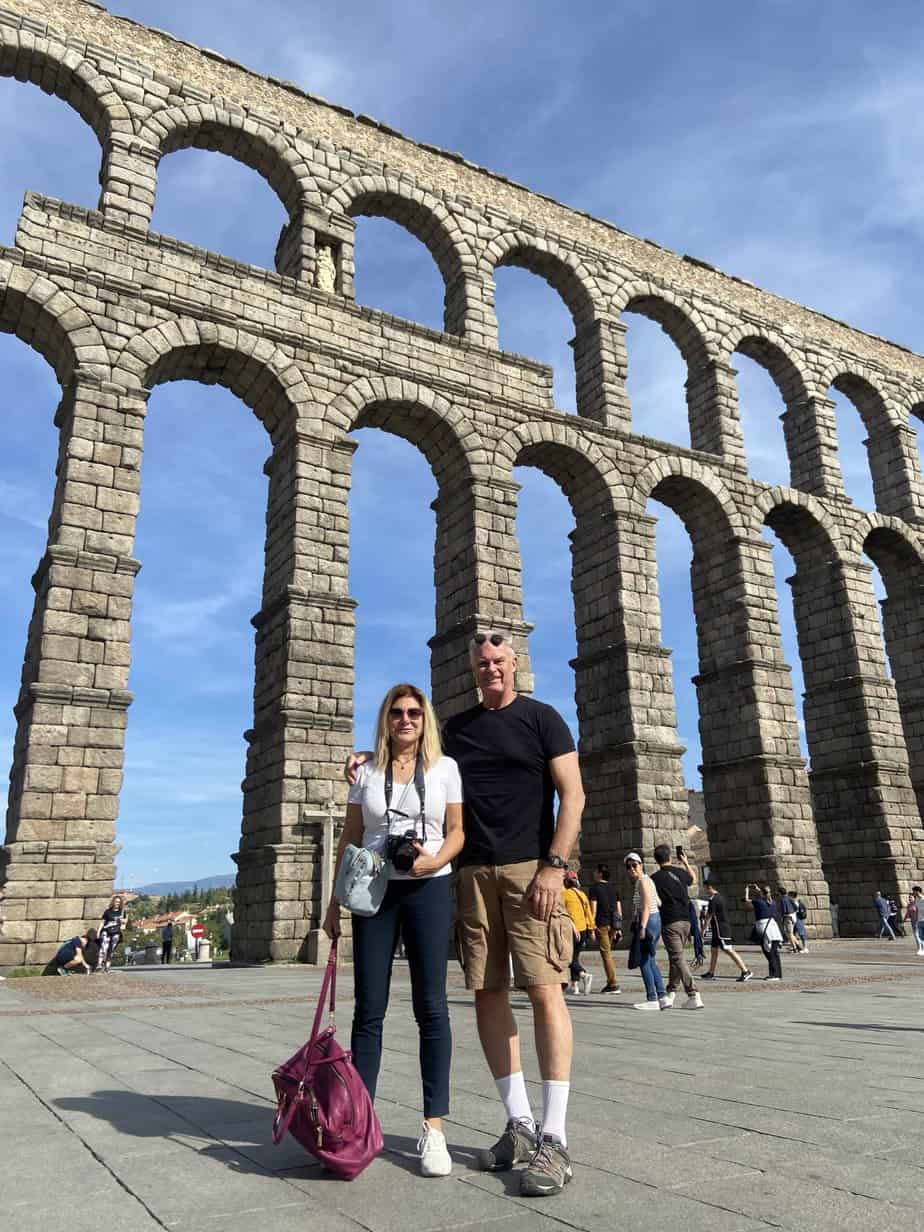
The aqueduct
Later, when we walked down the alley and turned the corner, the aqueduct towered above us. The preservation is stunning. It is nearly 3,000 feet (894 meters) long. Its 163 arches are made from 20,000 blocks of granite and looks as if it was built yesterday.
The city was abandoned after the Islamic invasion of Spain but the Muslims didn’t touch the aqueduct. Today, a long flight of stairs took us to the top where the narrow maze of the town’s streets begins.
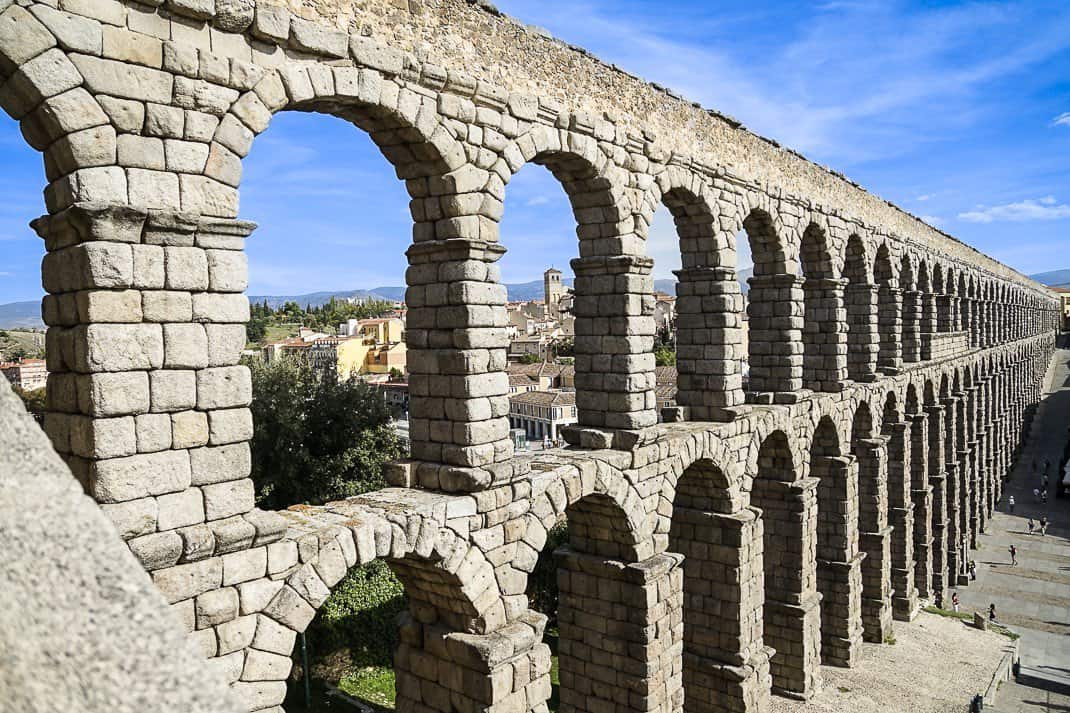
Segovia is touristy. It gets about 700,000 a year and the streets are lined with souvenir shops. I caved. In a shop specializing in medieval swords, I bought a dagger in a beautiful silver and gold sheath, perfect for my wall in case of a break in.
I don’t believe in guns, but I do believe in knives.
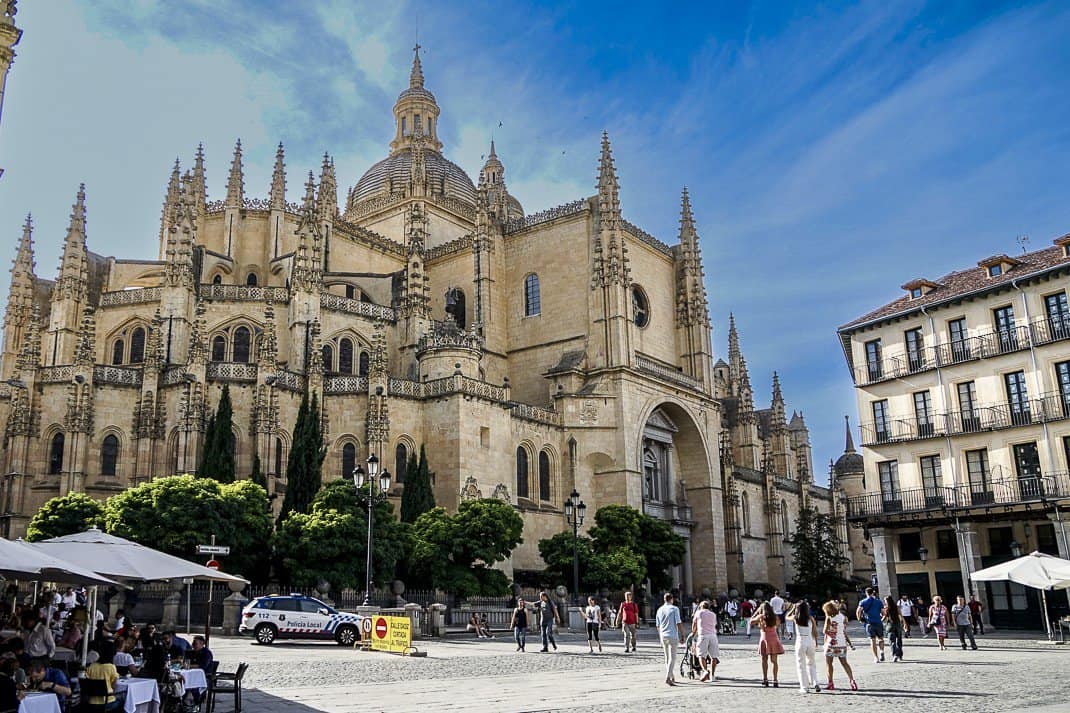
Besides the aqueduct, Segovia has two must-sees. Down the main drag about 10 minutes is Segovia’s cathedral. Started in 1525, it took 200 years to finish and jolts the senses when you enter its piazza. The Gothic church is massive, featuring more than 20 chapels and a staircase that has pretty good views of the town.
Alcazar
But Segovia’s main draw is a castle that is recognizable to anyone who ever watched a Disney movie. Alcazar was the inspiration for Walt’s Sleeping Beauty castle which graces every opening of a Disney movie and dominates Disneyland’s landscape.
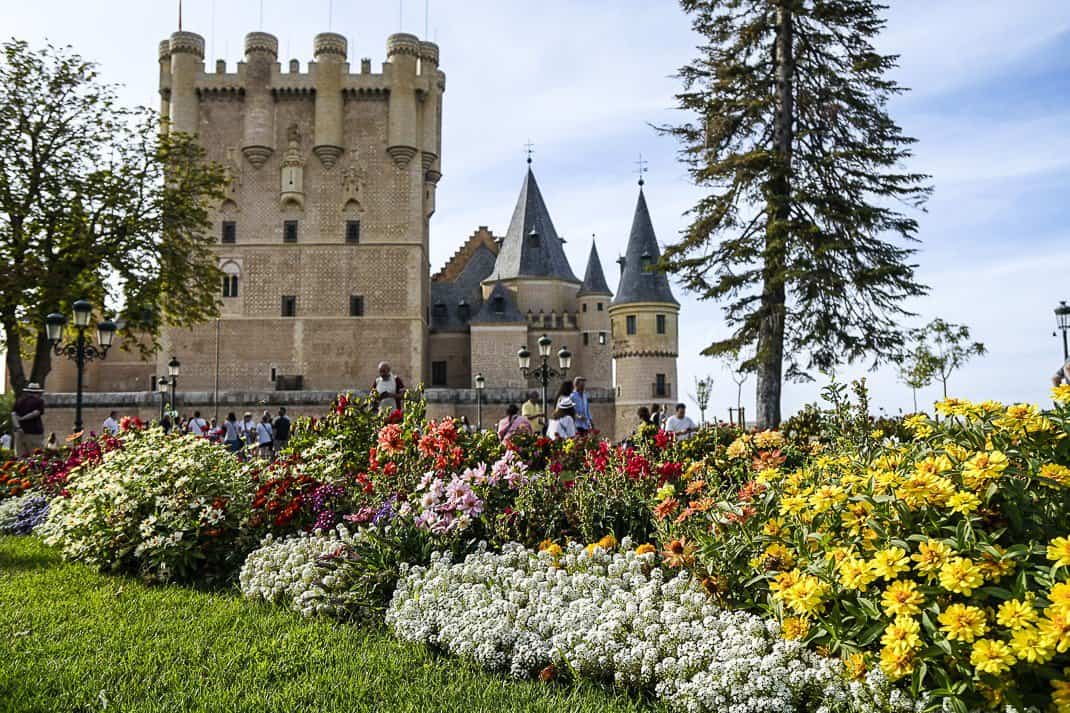
At the end of the main drag, we saw sticking up out of a huge manicured courtyard, a gargantuan castle. This is right out of central casting. Turrets. Towers shaped like witches hats. Small stone windows. Even a moat. I kept looking around for Goofy and a small Matterhorn. I did see two parents trying to corral three children which made the association with Disneyland that much more real.
Like the aqueduct, this also looked built yesterday. Unlike the aqueduct, Alcazar almost was. Originally a Roman fort, it was rebuilt in the 12th century by the Berbers, a North African tribe whose short-lived Almoravid dynasty controlled the area at the time. The name comes from al-qasr, the Arabic word for “fortress.”
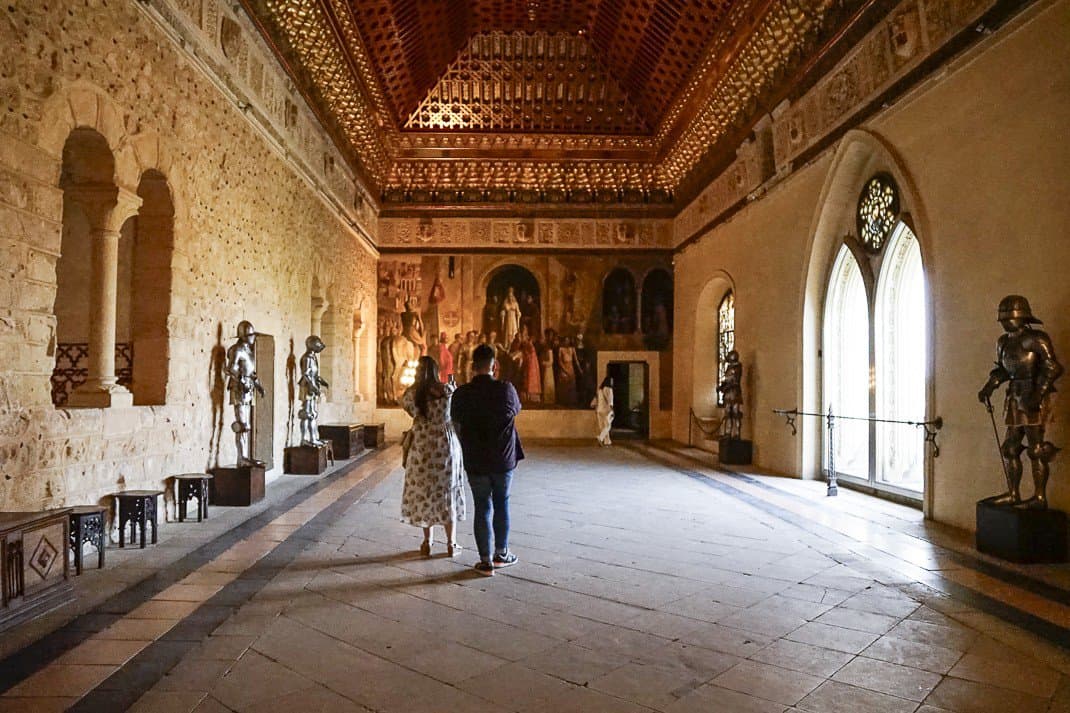
It was rebuilt in the 13th and 14th centuries but in 1862 a fire burned much of it. It was restored to its present condition in the 1880s. Walt Disney was born in 1901. You do the math.
Before the fire and before Madrid became Spain’s capital in the 16th century, Alcazar made Segovia one of the most important cities in Spain. It served as a royal palace and fortress, housing 22 kings and Castilian noblemen. Its opulent interior reinforced the power and wealth of the Castilian dynasty.
But it was also the home to princes and children, making it as much a home as a symbol of strength. Touring the inside I definitely saw some homey touches. The children were obviously spoiled, rich brats but that’s beside the point.

Each room is an insight into life in medieval times. Coats of armor line walls. A throne room, built by King Henry IV in 1456 after he defeated the Moors, features two high-backed chairs below a golden eagle. Reliefs of dozens of rulers and war heroes line the Galley Room, built in 1412. An arms room has cannons, spears, crossbows, coats of armor and local flags.
Each room has little nooks with embedded benches where you can look out at the vast countryside. Down below beyond the moat is the Monastery of Santa Maria del Parral from 1447 and the Islesia de la Vera Cruz church,built in 1208.
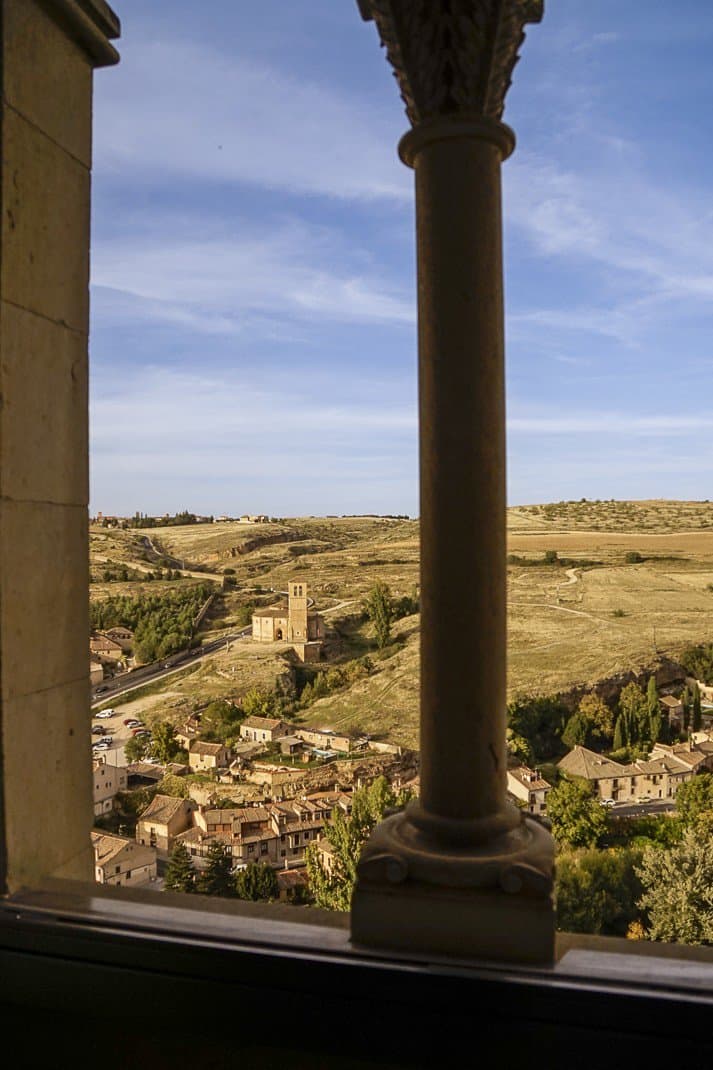
We went outside and climbed around the turrets, enjoying the cool breeze at 3,300 feet (1,005 meters) after spending two days in Madrid, still humid and in the 80s.
Later, we quenched our thirst with glasses of Erre white wine from Segovia, sitting at Bar Rubi in Plaza Mayor Still 79 degrees at 7 p.m., we relaxed with elegantly dressed Spanish tourists drinking Sangria and cold beer. Yes, Segovia does have a feel of royalty, much more than the sprawling maw that is Madrid.
That’s what day trips are for. Bite into a slice of life from another era. From Ancient Rome to modern Disneyland, Segovia covers the gamut.
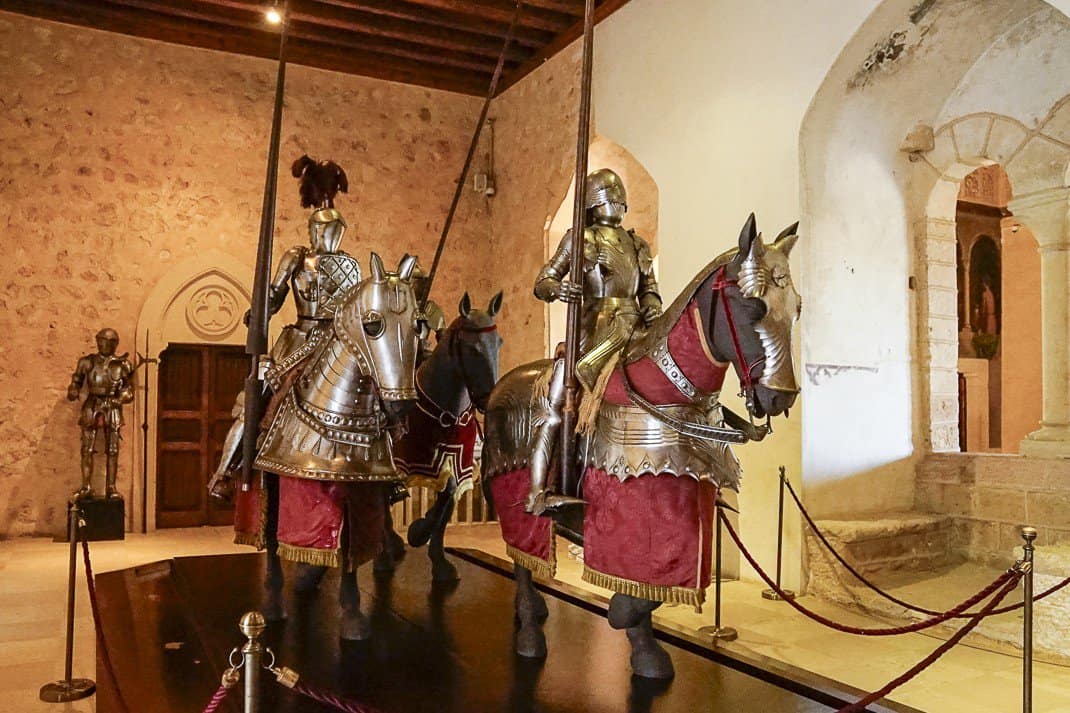
If you’re thinking of going …
How to get there: Take a Metro to Madrid Chamartin station. Fast trains leave about every hour. The 28-minute ride starts at €23 one way. The slow train takes two hours. I paid €63.60 for two slow trains going and fast trains returning from Segovia Guiomar station on the outskirts of Segovia reached by bus from the stop near the aqueduct. Train reservations recommended.
Where to eat: Restaurante Mesón Don Sancho, Calle Dr. Sancho 9, 34-921-42-0646, 10 a.m.-11:30 p.m. Wednesday-Saturday, 10 a.m.-7 p.m. Sunday-Tuesday. Wide range of meat dishes ranging from €11 to €31, salads starting at €12.50 and local dishes from €9-€16.50. Try the roast duck in orange preserves.
When to go: Alcazar, 34-921-210-515, https://www.alcazardesegovia.com/, atencionalcliente@alcazardesegovia.com, 10 a.m.-8 p.m. April 1-Oct. 31, 10 a.m.-6 p.m. Nov. 1-March 31, €10.
For more information: Turismo de Segovia, Plaza del Azoguejo 1, 34-921-46-6720, https://www.turismodesegovia.com/en/node/8661, info@turismodesegovia.com.

